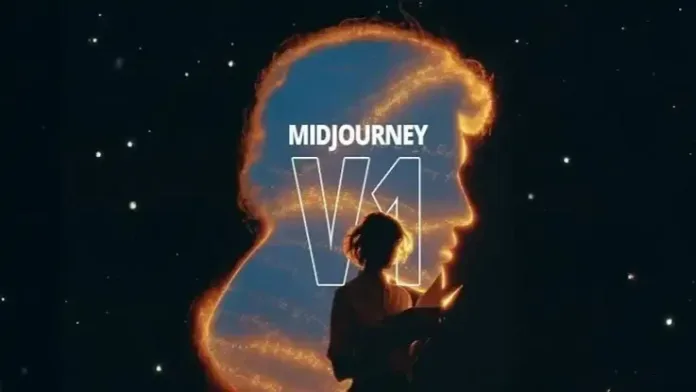Table of Contents
MidJourney Video Model V1: Affordable AI Video for Everyone
At Squaredtech, we track every major release in AI media generation, and MidJourney has just taken a bold step. The company, known for leading the AI art revolution, has launched its V1 Video Model on June 18th, 2025. This marks its first official entry into AI video, with pricing that directly undercuts giants like OpenAI Sora and Google Flow.
The announcement was made on social media, where MidJourney described the new product as “fun, easy, and beautiful.” Available now for $10 per month, it positions itself as the first video AI model truly accessible to the public.
This pricing is a statement. OpenAI charges $20 per month for ChatGPT Plus users to access Sora, while professionals can pay up to $200 per month for higher-end models. Google Flow, one of the most hyped tools in this sector, costs $249 per month. Adobe’s Firefly video tool starts at $9.99 for limited short clips, and Runway’s Gen-4 Turbo is available from $12. Compared with these, MidJourney’s Video V1 feels disruptive.
Check Out Latest Article of Midjourney V7 Launches: Faster AI Image Generation With Personalization April 5th, 2025 – SquaredTech
But affordability is only one piece of the story. At Squaredtech, we want to explore what this means for creators, how the tool works in practice, and whether it signals the beginning of a bigger shift in AI-powered video generation.
How MidJourney Video Model V1 Works
The V1 Video Model is integrated into MidJourney’s existing image generation platform. Users can create images in the usual way and then hit an “Animate” button to bring those images to life. The model can animate both MidJourney-generated images and images from outside the platform.
Key Features of V1:
- Automatic and Manual Animation: Users can let the system handle the animation or adjust motion manually.
- Low and High Motion Modes: Low motion is ideal for ambient, subtle visuals, while high motion creates dynamic, fast-moving clips.
- Extendable Clips: Videos start at around five seconds, but users can extend them in four-second increments, up to four times.
- Multiple Outputs: Each job produces four five-second videos, giving users creative variations.
- Web-only for now: The feature is currently available exclusively on MidJourney’s web platform.
Founder David Holz described V1 as a “stepping stone” toward a much larger vision. MidJourney wants to build real-time open-world simulations in the future. Holz explained that the roadmap involves sequential models:
- Image models.
- Video models of those images.
- 3D models built from video.
- Real-time versions of all these models.
V1 is just the first step, but it’s a visible leap toward turning static art into motion, something many users have requested since MidJourney became mainstream in AI art.
Pricing: Cheaper but With Trade-offs
At $10 per month, MidJourney Video V1 is far cheaper than its rivals. However, there are trade-offs in cost per generation. The company has set video pricing at eight times the cost of image generation.
In practical terms, each generation creates four short clips, but the actual cost will vary depending on how many jobs users run. Holz admitted that pricing will remain difficult to predict, as the team plans to observe usage trends before adjusting.
This pricing flexibility signals that while MidJourney wants to make AI video broadly accessible, it is still calibrating its business model. For early adopters, the low entry cost offers an attractive opportunity to experiment before future price adjustments.
Competition: Sora, Google Flow, and Beyond
MidJourney’s announcement feels like a direct challenge to its biggest rivals:
- OpenAI Sora: Available through ChatGPT Plus ($20/month) and Pro ($200/month), Sora offers synchronized sound and cinematic realism.
- Google Flow: At $249/month, Flow positions itself as a premium enterprise tool.
- Adobe Firefly: Starts at $9.99 for 20 short clips, designed for creative professionals.
- Runway Gen-4 Turbo: Priced from $12/month, with a focus on fast, iterative video creation.
By offering a $10 plan, MidJourney makes AI video available to hobbyists, independent creators, and smaller studios who cannot justify enterprise pricing. The company’s tone online suggested this was a direct jab at competitors that position video AI as exclusive and premium.
AI Video Platform Comparison: MidJourney vs. Sora, Flow, Firefly & Runway
| Platform | Monthly Price | Target Users | Key Features | Squaredtech Verdict |
|---|---|---|---|---|
| MidJourney V1 | $10/month | Hobbyists, independent creators, small studios | – “Animate” button for instant image-to-video conversion – 5–16 second clips – Low or high motion modes | ✅ Most affordable entry-level option; ideal for creators testing AI video without enterprise costs. |
| OpenAI Sora | $20 (Plus) / $200 (Pro) | Advanced creators, professionals | – Realistic motion and synchronized sound – High-quality cinematic rendering | 🎬 Most realistic output, but expensive; limited access through ChatGPT tiers. |
| Google Flow | $249/month | Enterprise users, researchers | – Advanced video synthesis – Long-form content generation – Cloud-based controls | 💼 Powerful but costly, designed for enterprise-scale video AI, not small teams. |
| Adobe Firefly | $9.99/month | Designers, digital artists | – 20 short clips (5 seconds each) – Seamless Creative Cloud integration | 🎨 Great for creative pros, but limited clip length and credit system may frustrate users. |
| Runway Gen-4 Turbo | From $12/month | Filmmakers, social media teams | – Fast rendering and iterative editing – Storyboard-to-video workflow | ⚡ Strong on speed, perfect for iterative creators and short-form video experimentation. |
Risks and Responsibility in AI Video
MidJourney’s launch comes at a time when AI video faces scrutiny from regulators, creatives, and the public. Experts warn that hyper-realistic synthetic video could be indistinguishable from real footage, creating risks for misinformation and abuse.
Recent incidents, such as the viral AI-generated “emotional support kangaroo” video, highlight how quickly false content spreads online. Meanwhile, deepfake technology has been misused for explicit content, leading to new U.S. laws making such activity a federal crime.
David Holz addressed these concerns directly in his launch blog, reminding users to use the technology responsibly. He acknowledged that AI video can be “useful, or even profound” when applied correctly, such as reviving history or creating imaginative worlds, but also carries risks if misused.
At Squaredtech, we believe this balance between accessibility and responsibility will define the next stage of AI media adoption. Platforms like MidJourney must innovate while setting boundaries for ethical use.
Legal Battles and Industry Pressure
MidJourney’s move into video also comes amid legal disputes with major media companies. Disney and Universal have recently filed lawsuits claiming the platform trained on copyrighted material without permission.
The suit labels MidJourney as a “bottomless pit of plagiarism,” raising questions about the data sources used to build its models. These legal challenges could influence how widely MidJourney’s video tool is adopted, especially in professional and commercial contexts.
If courts side with the media companies, it could reshape how generative AI platforms collect and license data. If MidJourney prevails, it may validate the current open training model that many AI startups rely on.
The Future of AI Video: Squaredtech’s Analysis
From our perspective at Squaredtech, the launch of MidJourney Video V1 represents three major shifts in the AI industry:
- Accessibility Over Exclusivity: At $10/month, V1 lowers the barrier to entry, contrasting sharply with enterprise pricing from OpenAI and Google.
- Convergence of Image and Video: The Animate feature blurs the line between still art and motion graphics, showing how AI will merge creative mediums.
- Race for Real-Time Simulation: MidJourney’s long-term vision signals that the company isn’t stopping at clips. It wants immersive, interactive environments that could rival gaming and film industries.
If V1 is the “stepping stone,” as Holz described, the next few years could see MidJourney competing not just with Sora and Flow, but also with gaming engines, animation software, and Hollywood studios.
Conclusion
MidJourney Video Model V1 is more than just a new feature. It is a strategic shot at redefining who can create AI video, and at what price. For $10 per month, creators now have access to a tool that, while not as advanced as Sora or Flow, puts meaningful animation into the hands of everyday users.
At Squaredtech, we see this as a turning point. The AI video race is no longer confined to big-budget enterprise tools. With MidJourney’s entry, the conversation shifts to affordability, experimentation, and user-driven creativity.
The next question is whether MidJourney can sustain this momentum under the weight of legal challenges and growing responsibility for ethical AI use. What’s clear is that the AI video landscape has just become far more competitive, and the biggest winners may be the creators who now have more choices than ever.
Stay Updated: Artificial Intelligence


